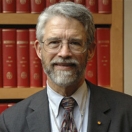
Understanding the rapid changes that are affecting the Arctic—as well as the impacts of these changes on the rest of the world—requires a cooperative, global approach based on research partnerships involving participants from Arctic and non-Arctic nations, including, of course, the people who call the Arctic home. That’s why, on September 28, 2016—just after the one-year anniversary of President Obama’s historic trip to Alaska—the Administration will host the first-ever Arctic Science Ministerial.
The White House Arctic Science Ministerial will bring together ministers of science, chief science advisors, and other high-level officials from countries around the world, as well as representatives from indigenous groups, to expand joint collaborations focused on Arctic science, research, observations, monitoring, and data-sharing. The goals of the event are to advance promising, near-term science initiatives and create a context for increased international scientific collaboration on the Arctic over the longer term.

Specifically, the Ministerial will focus on four key themes:
- Arctic Science Challenges and their Regional and Global Implications. Considerable investment by countries, organizations, and universities in recent years has led to significant advances in our understanding of all aspects of environmental change in the Arctic. There is still a need for additional international scientific collaboration in this area, however, particularly around gathering, synthesizing, and sharing information related to environmental changes in the Arctic and their regional and global implications.
- Strengthening and Integrating Arctic Observations and Data Sharing. Improved monitoring of environmental changes in the Arctic is essential for increasing understanding of those changes and improving quantitative predictions of future change both inside and outside the Arctic region. Current monitoring capabilities in the Arctic, while impressive, fall short of what is needed in areas such as integrating global observing programs, expanding community-based observing efforts, and increasing integration of indigenous peoples’ knowledge.
- Applying Expanded Scientific Understanding of the Arctic to Build Regional Resilience and Shape Global Responses. Arctic peoples have faced long-standing challenges that are now being compounded by the social, economic, and climatic changes facing the region. International collaboration is needed to better understand how climate change is affecting—and is projected to affect—the Arctic so that strategies can be developed that both meet the basic needs of Arctic people and build capabilities to enhance resilience to future change.
- Arctic Science as a Vehicle for STEM Education and Citizen Empowerment. Engaging and educating citizens is key to sustainable development in the Arctic and for preparing the next generation of Arctic communities to face tomorrow’s challenges. The challenges of educating young people in the Arctic must be addressed in order to empower Arctic citizens to participate fully in decision making, and to ensure that they are prepared for the future.
To learn more and receive updates about the White House Arctic Science Ministerial and ways in which the United States is staying engaged in the Arctic, click here.
John P. Holdren is Assistant to the President for Science and Technology, Director of the White House Office of Science and Technology Policy, and Chair of the interagency Arctic Executive Steering Committee.


